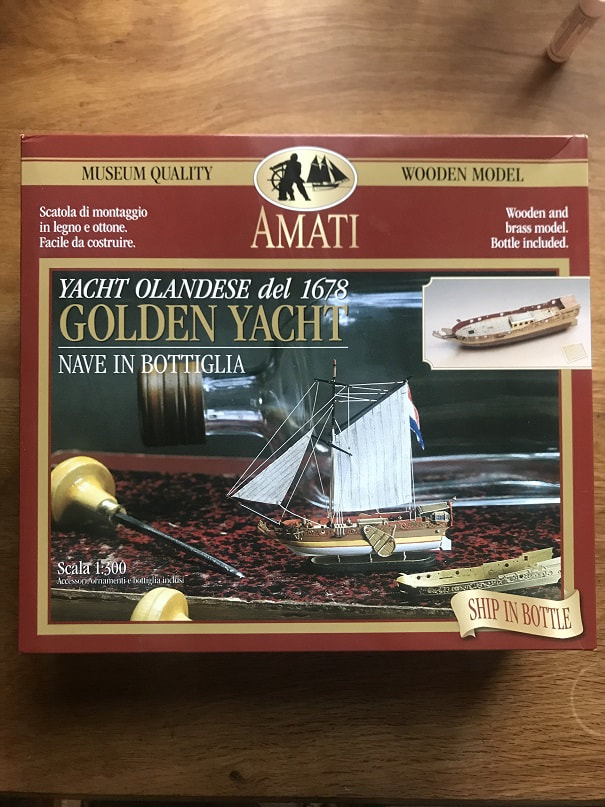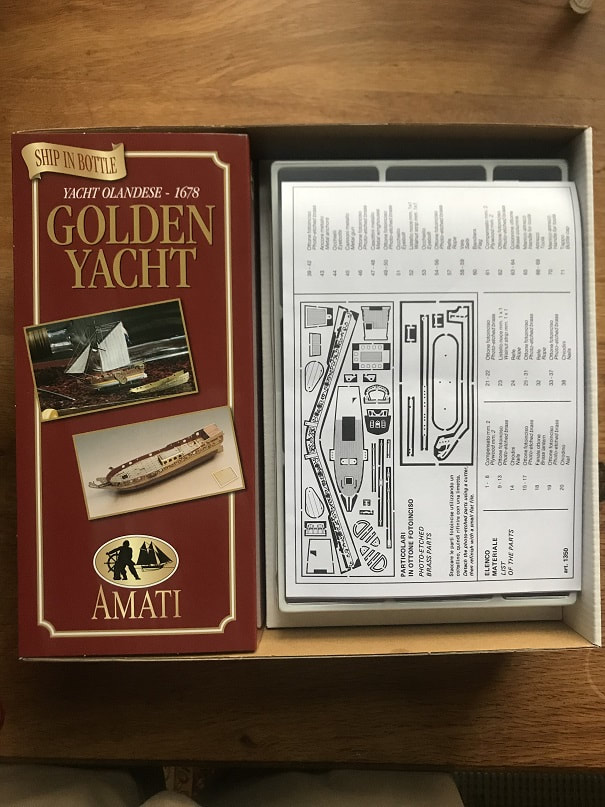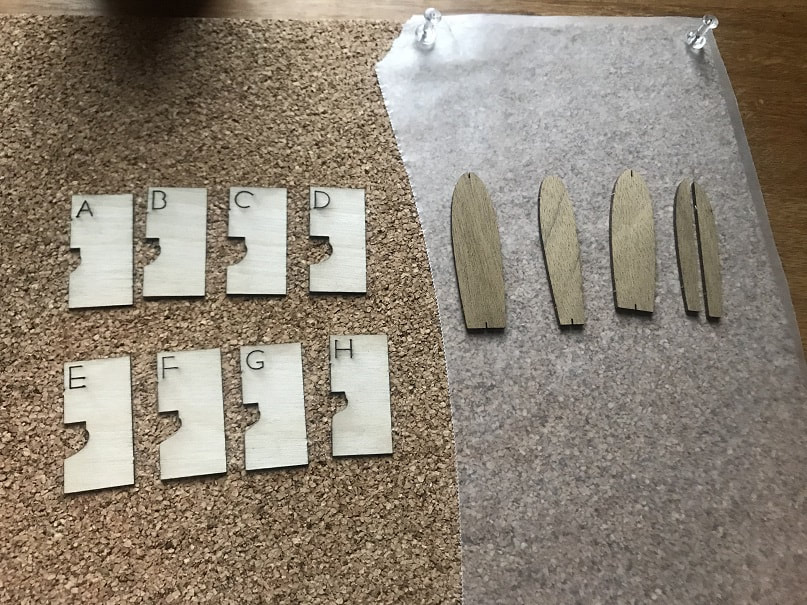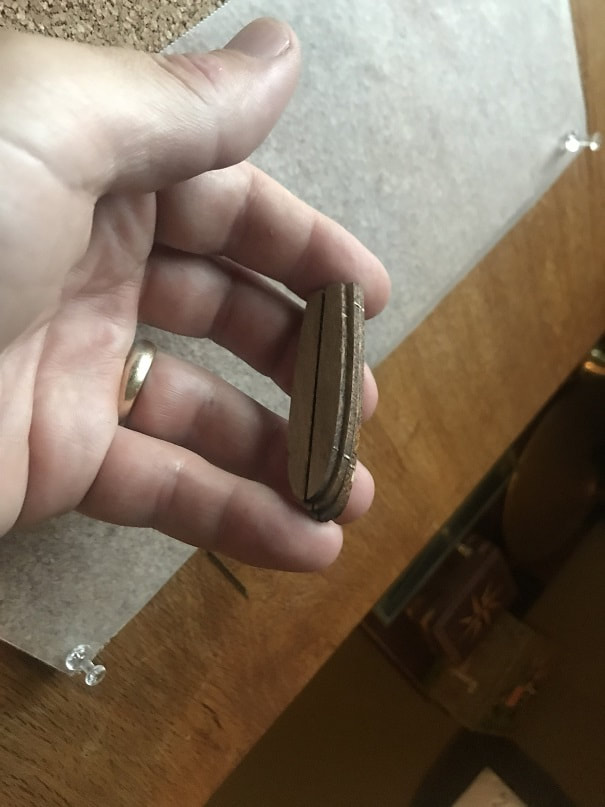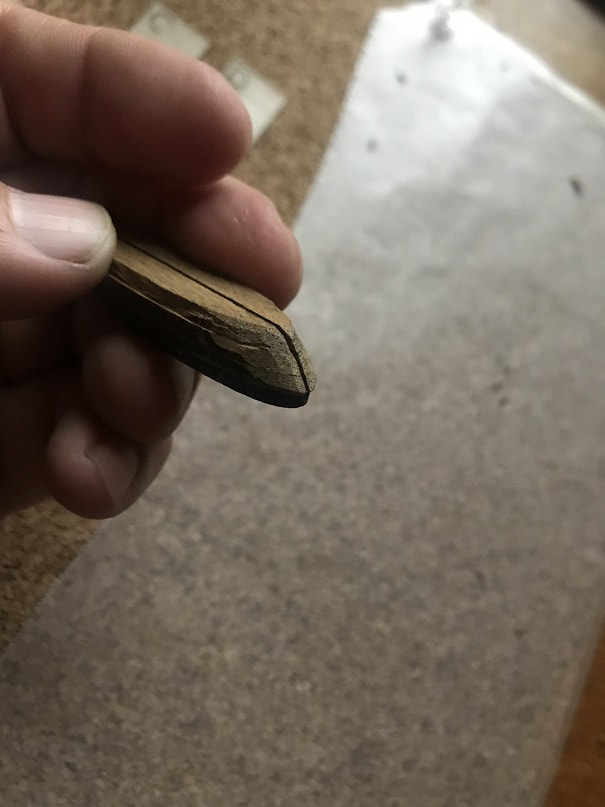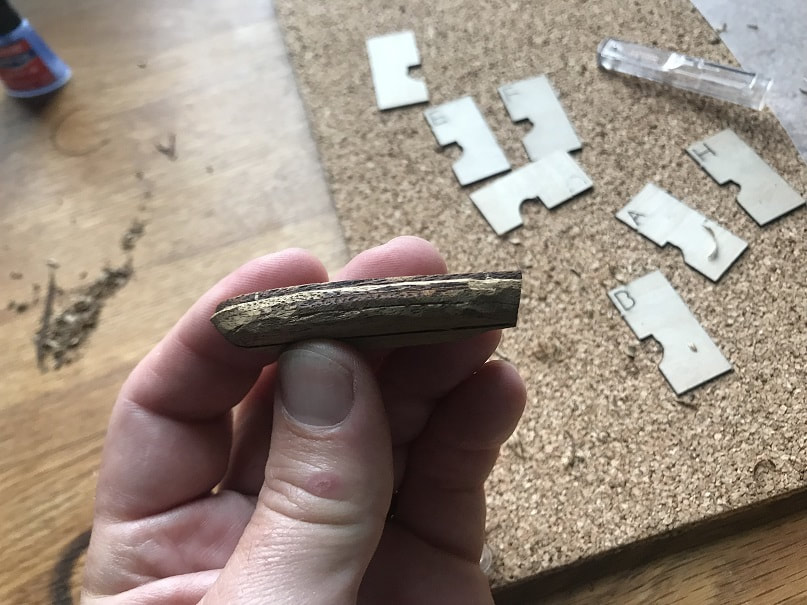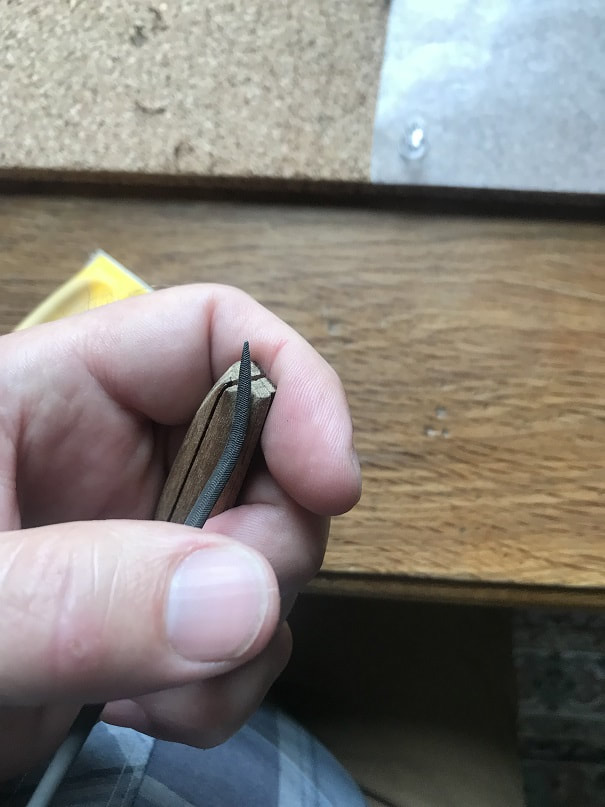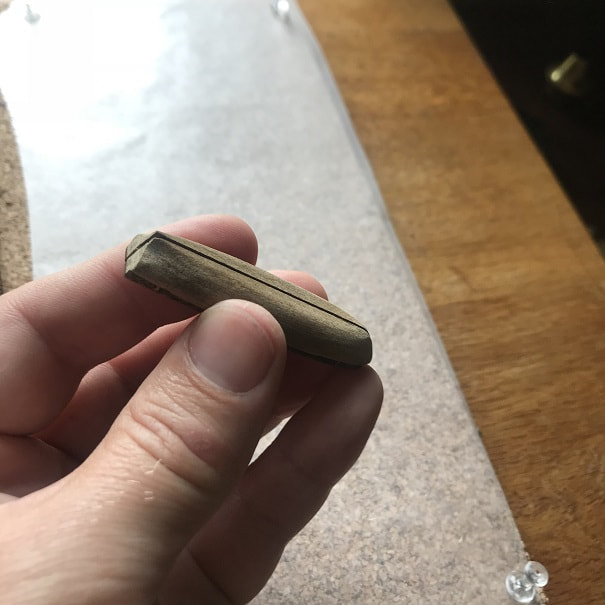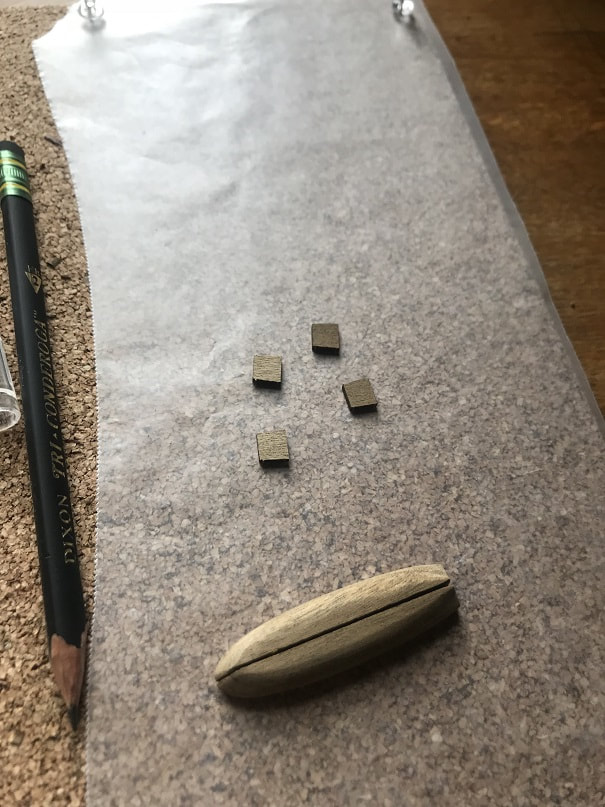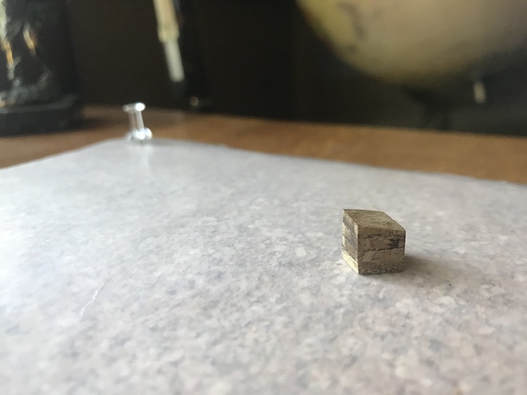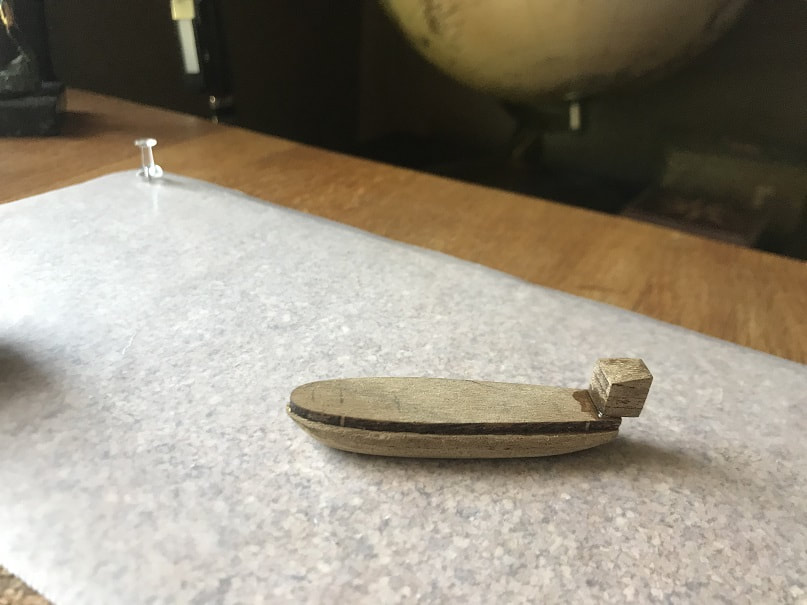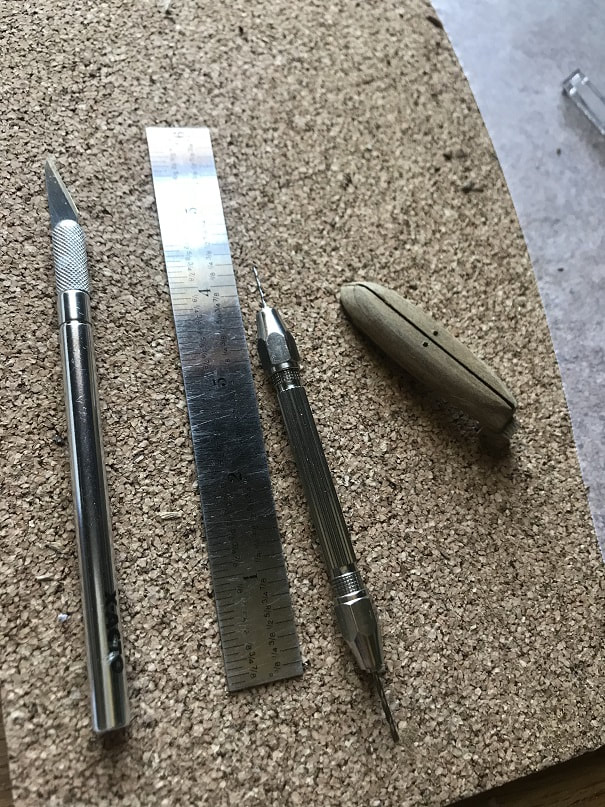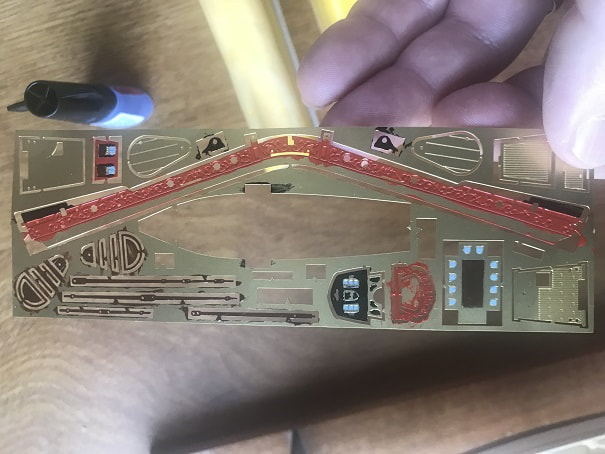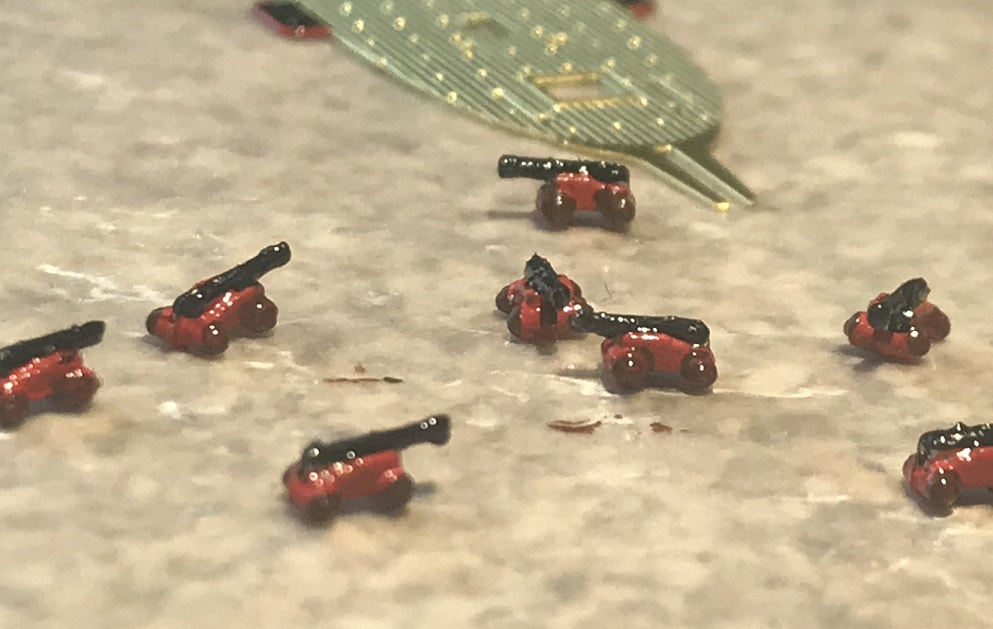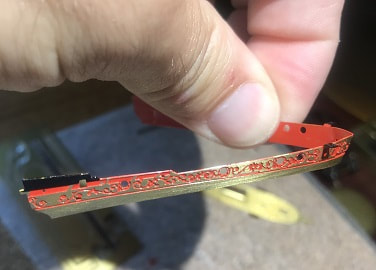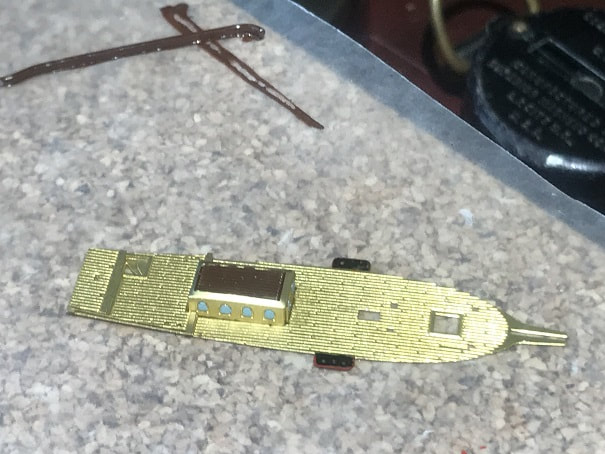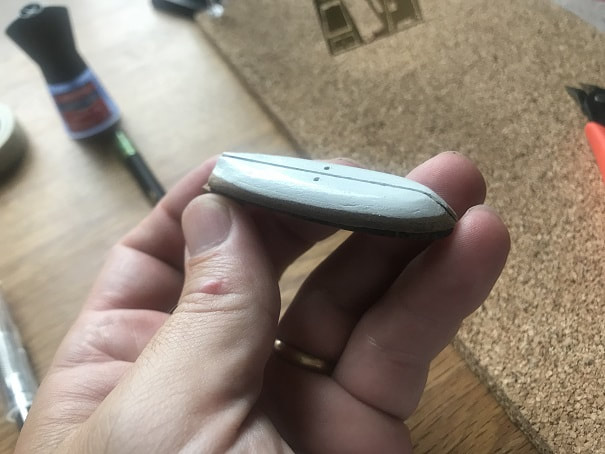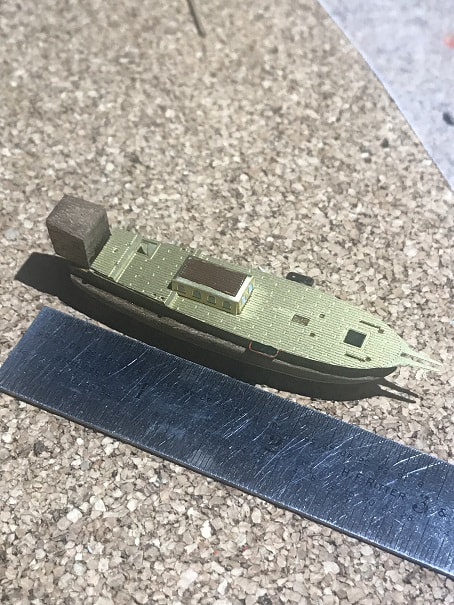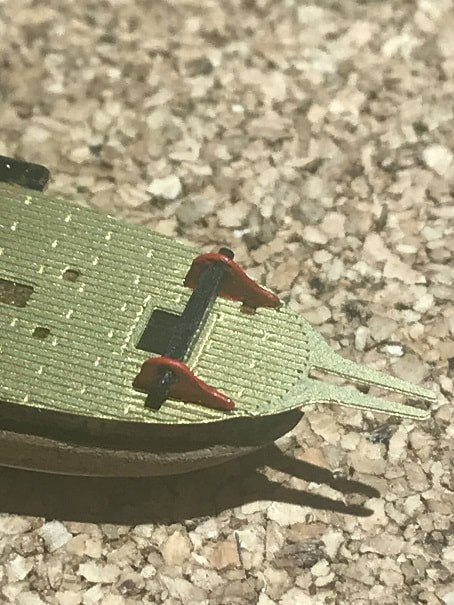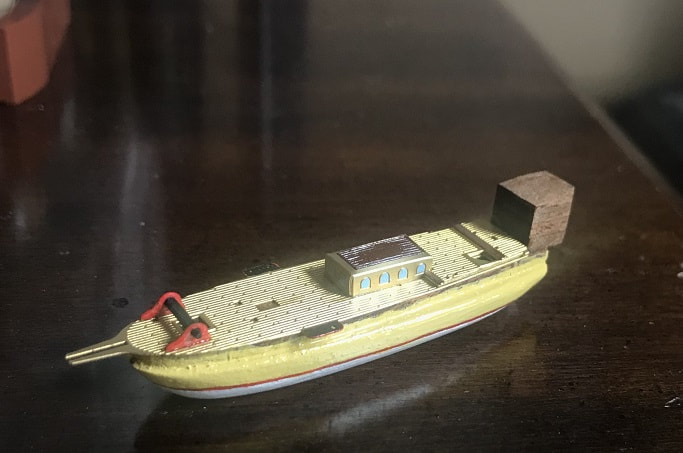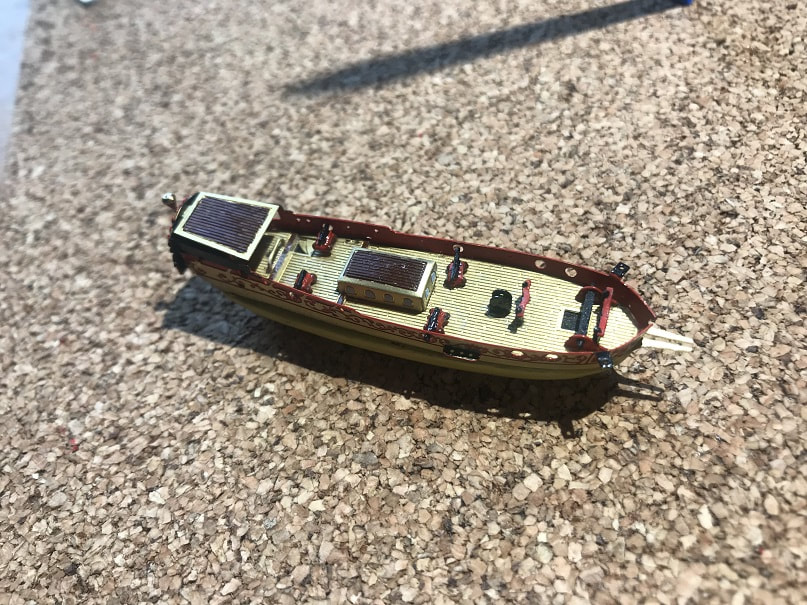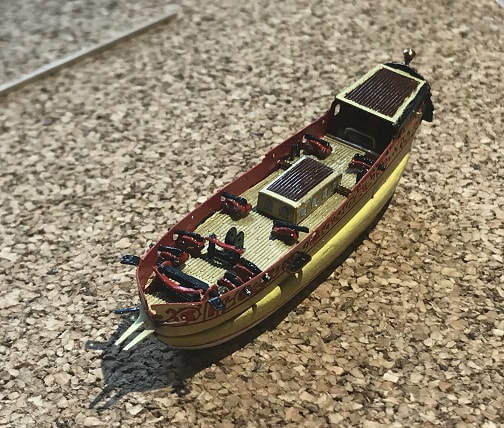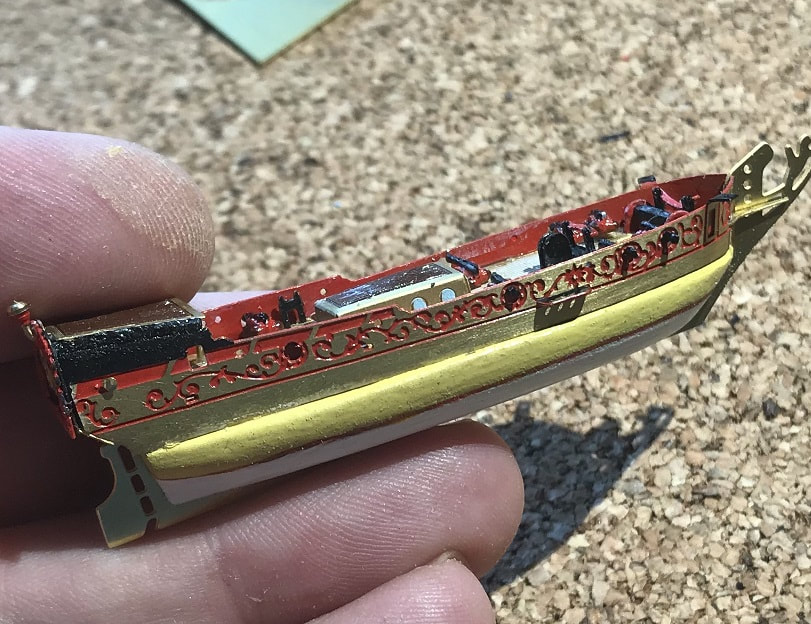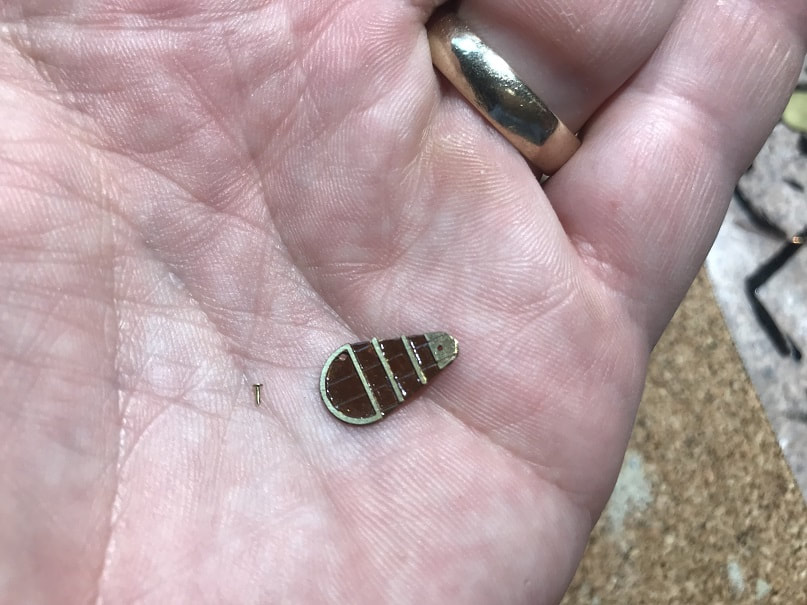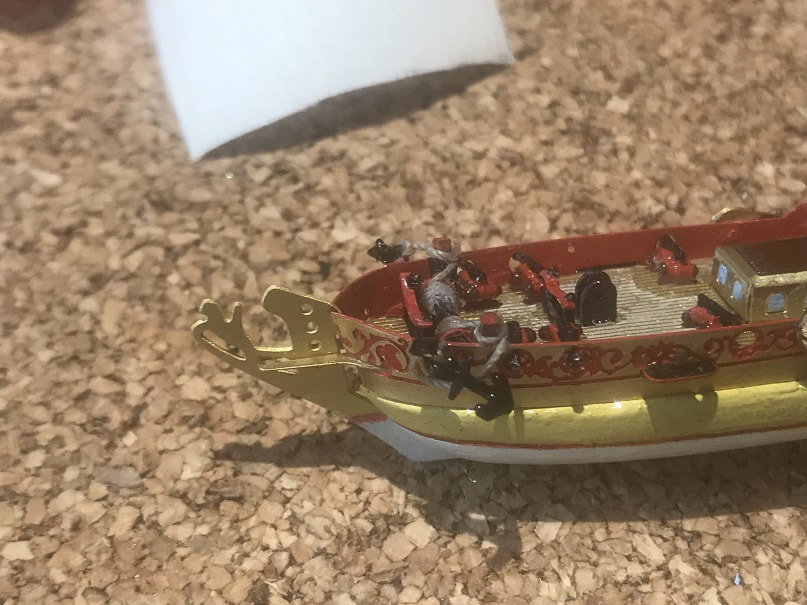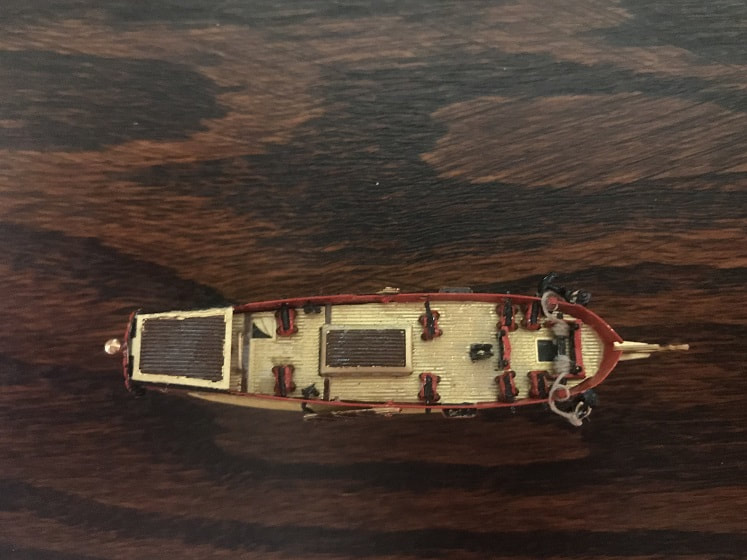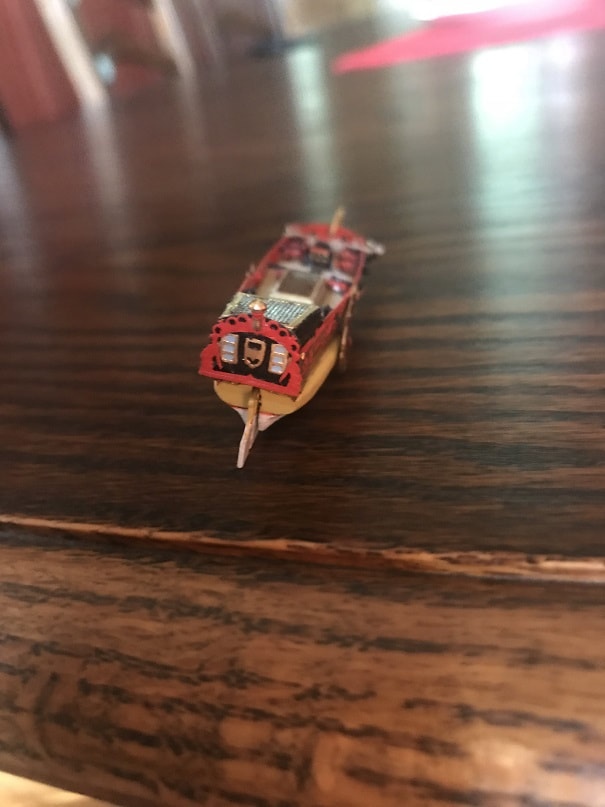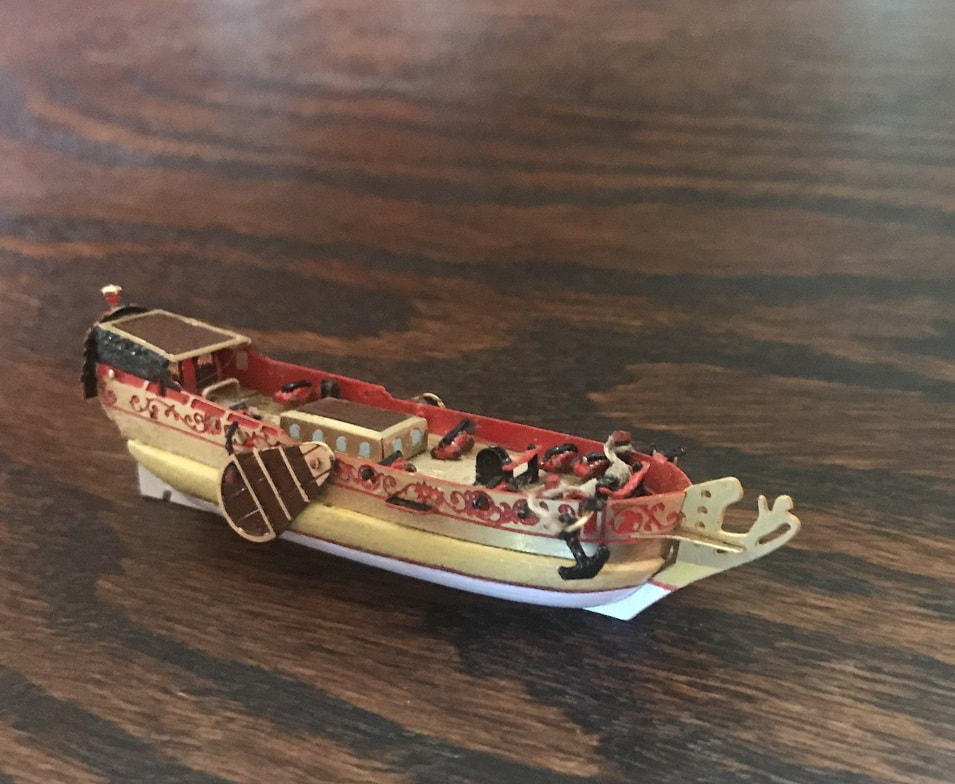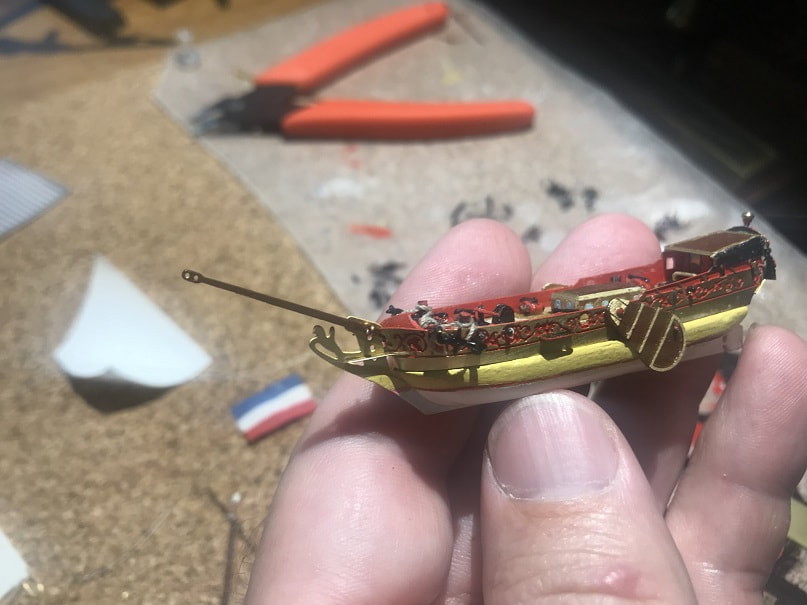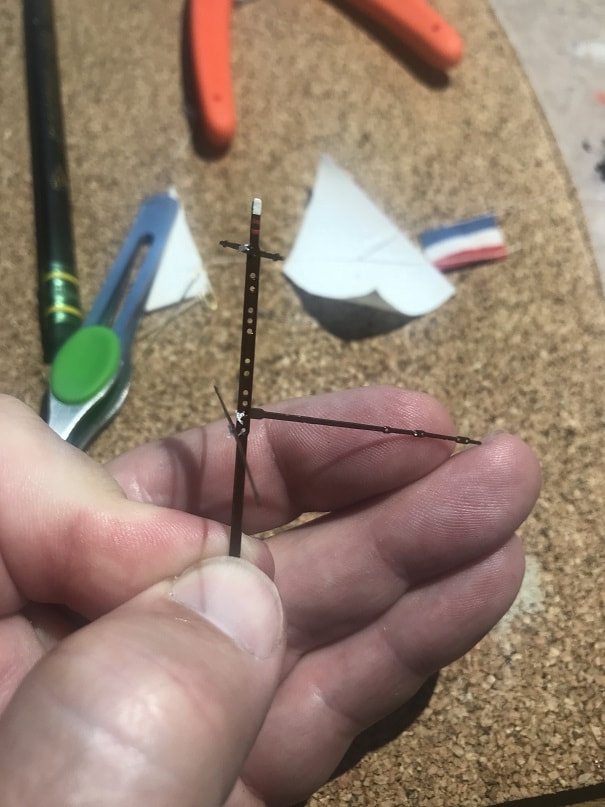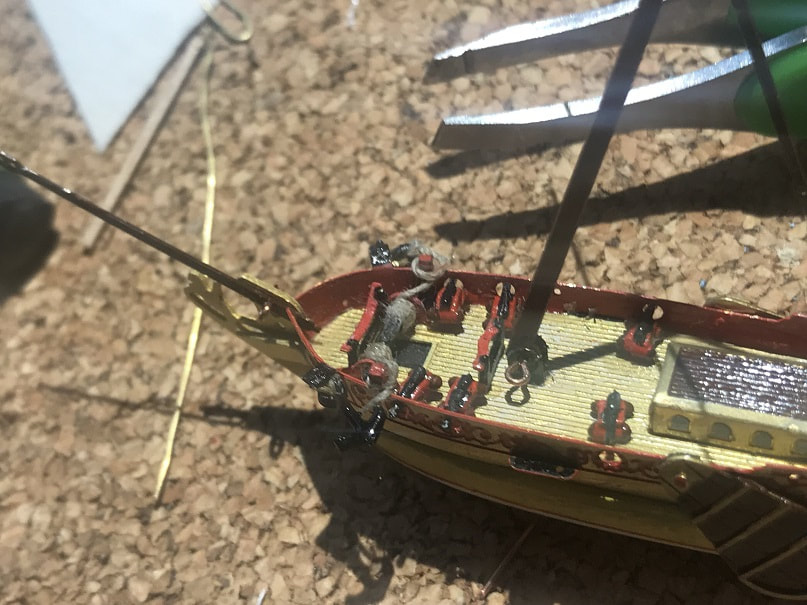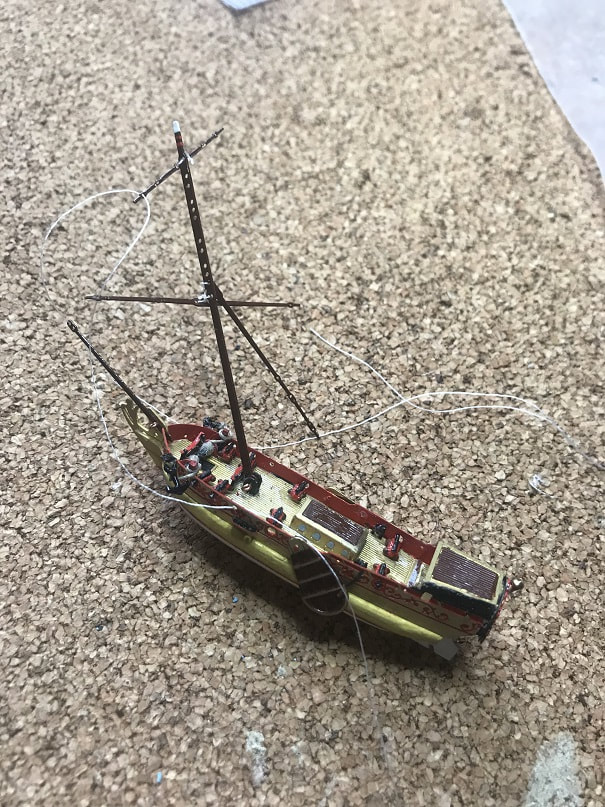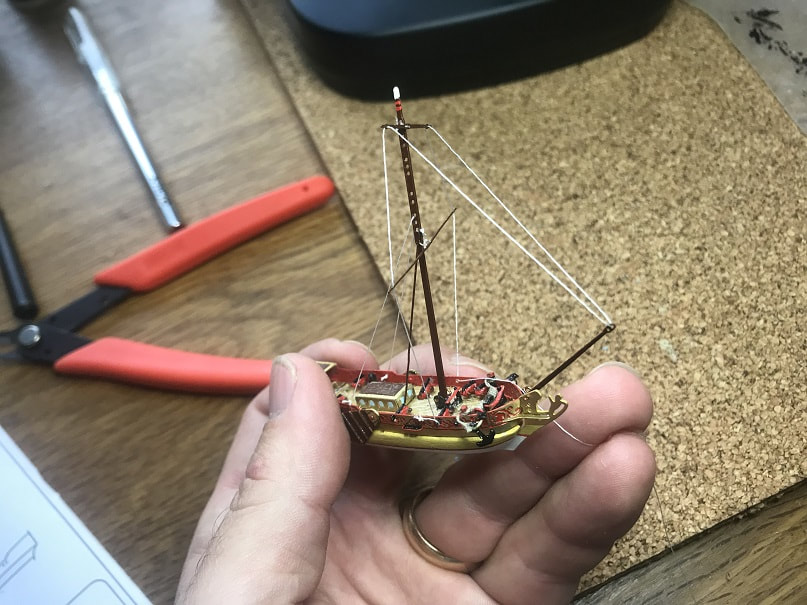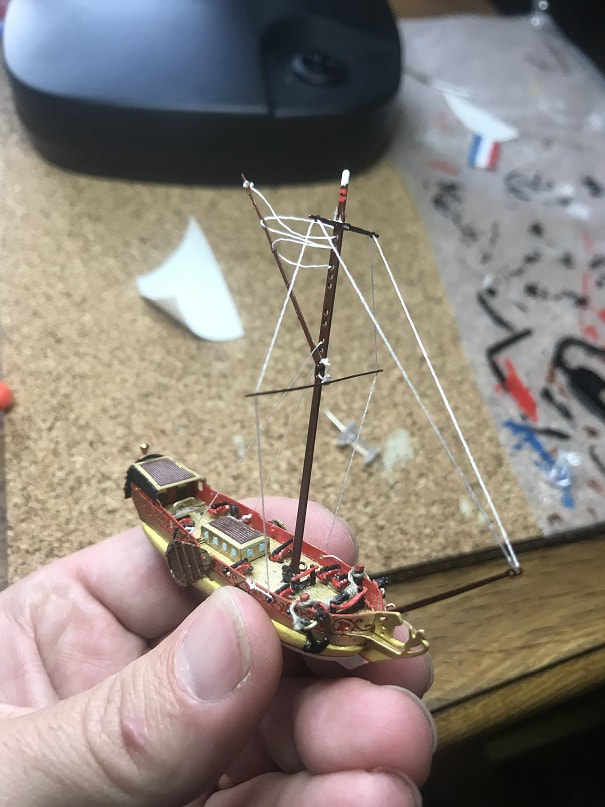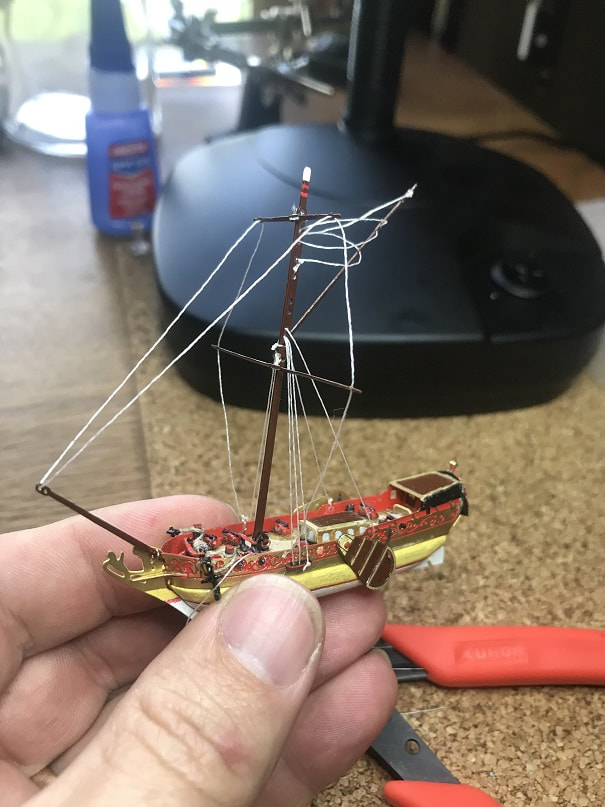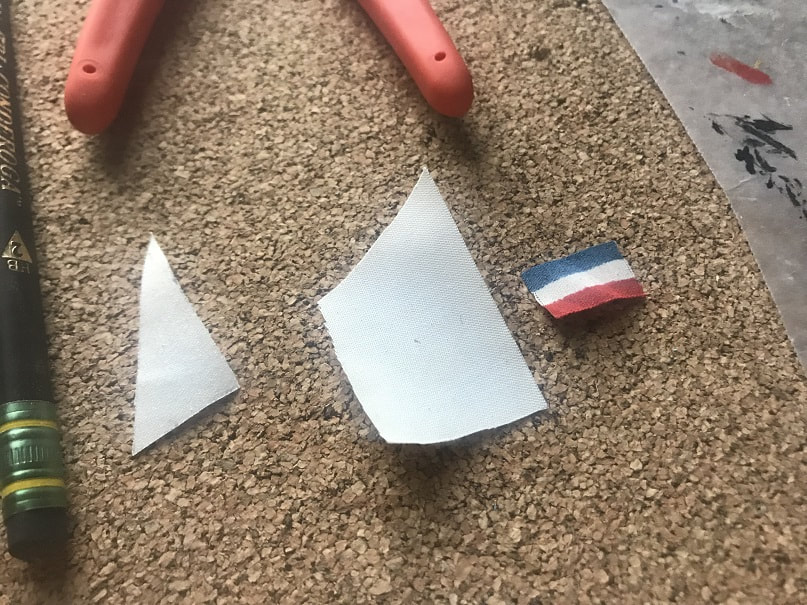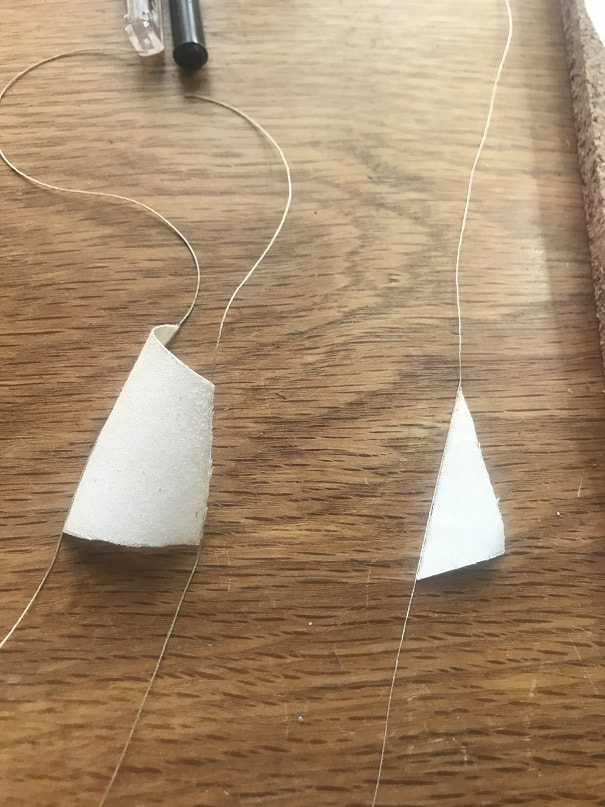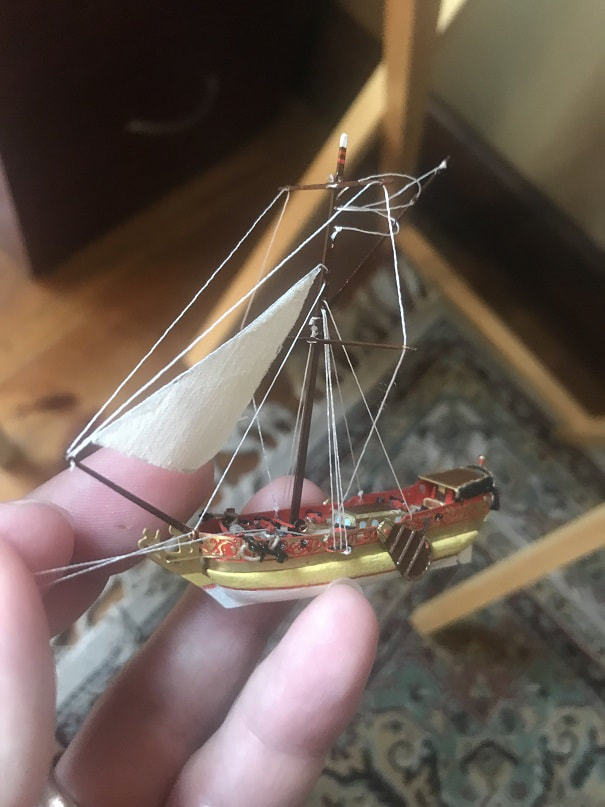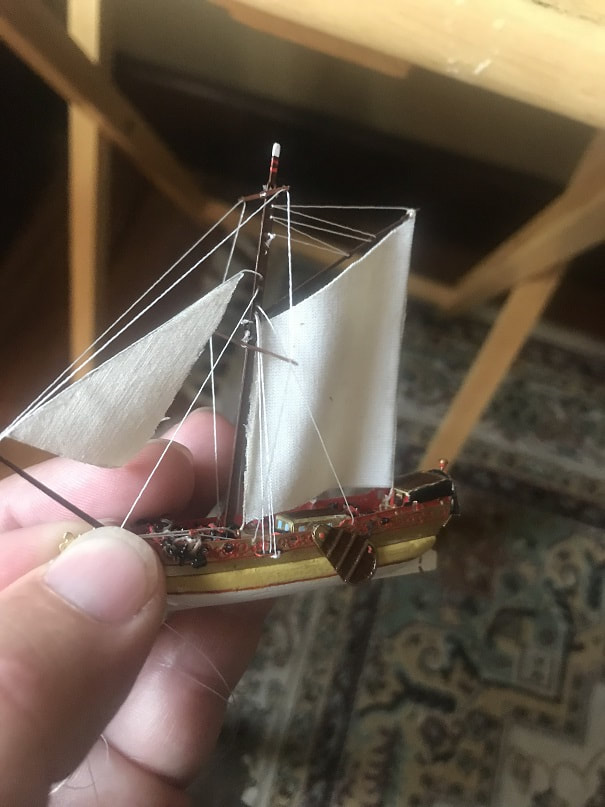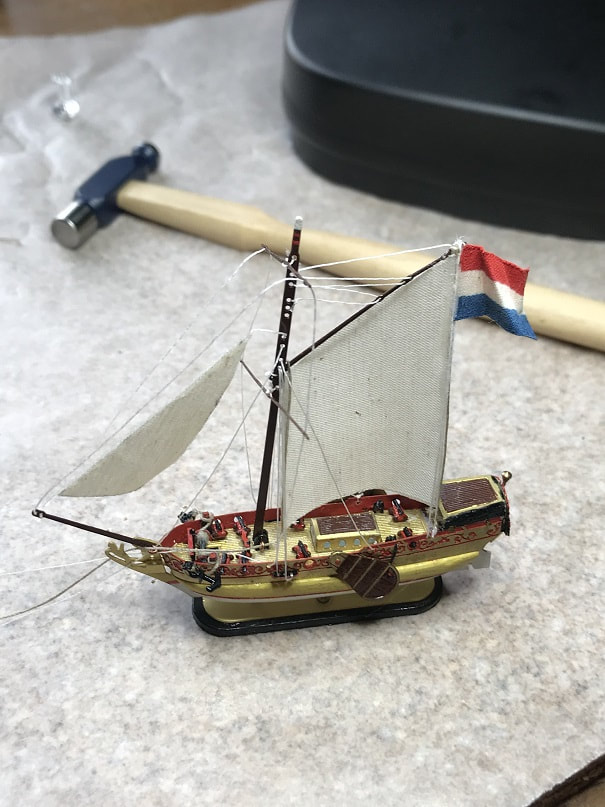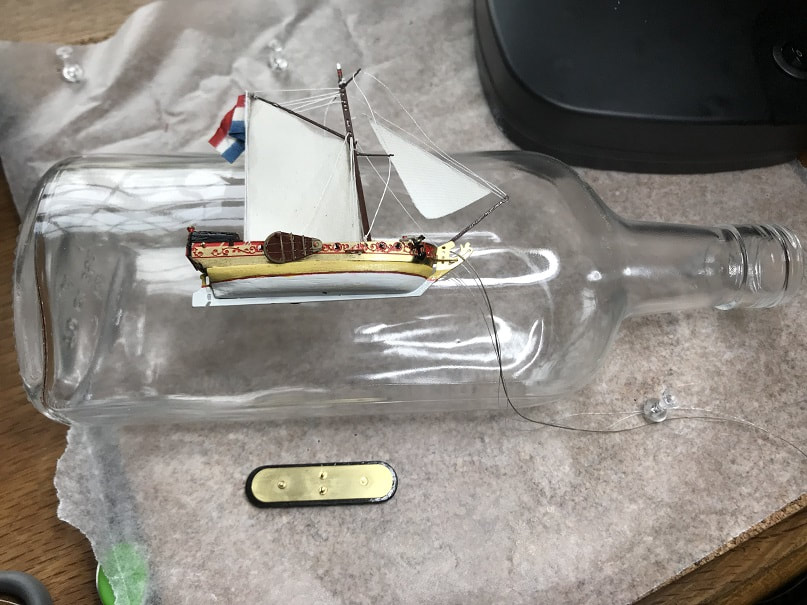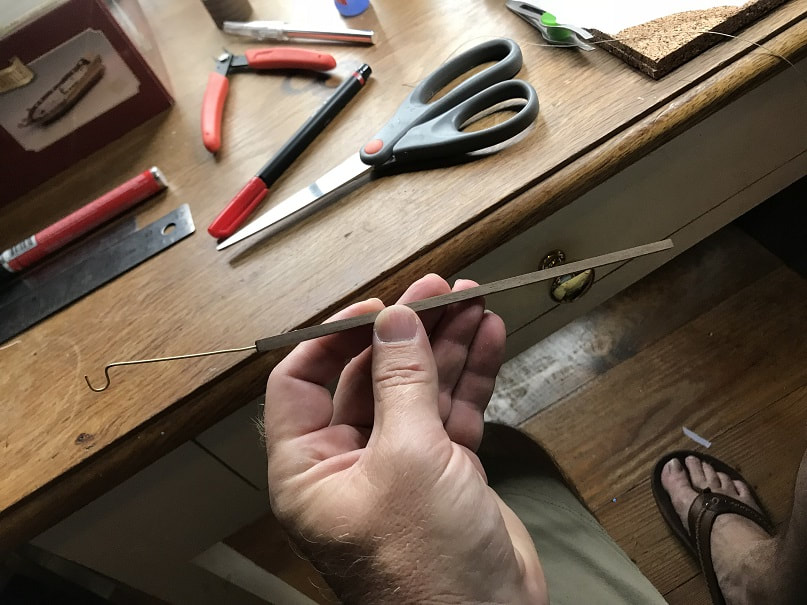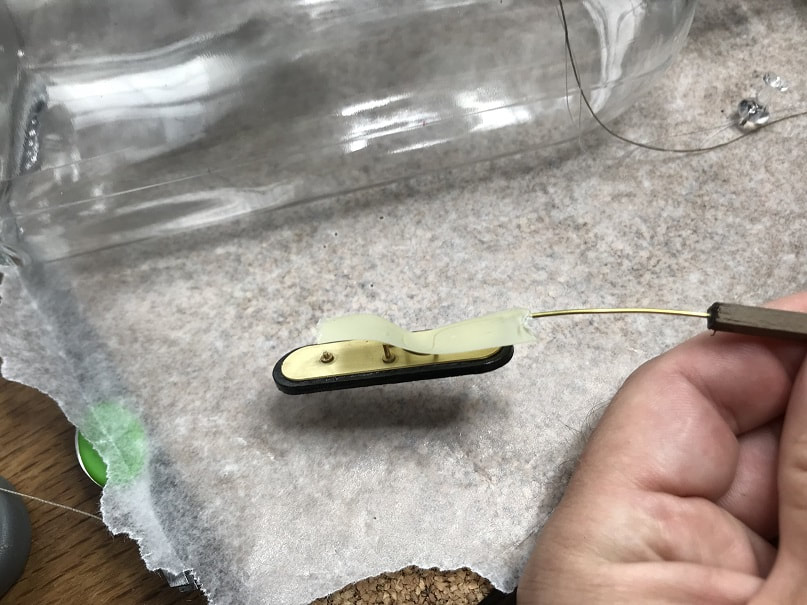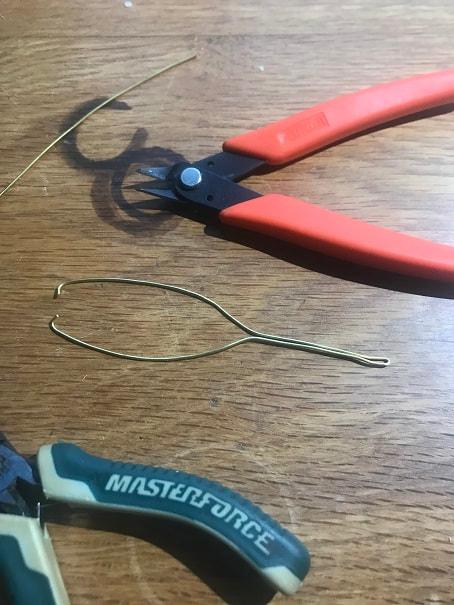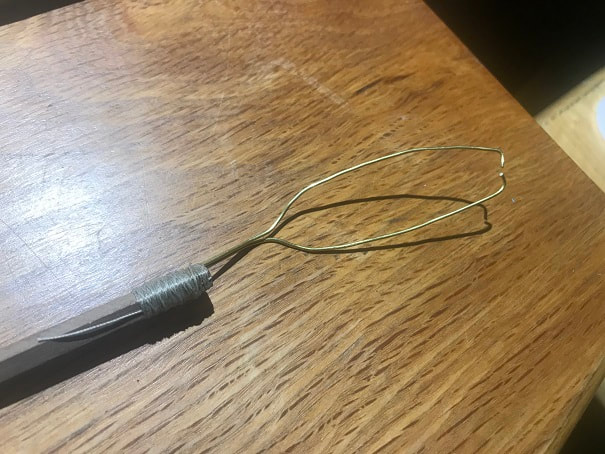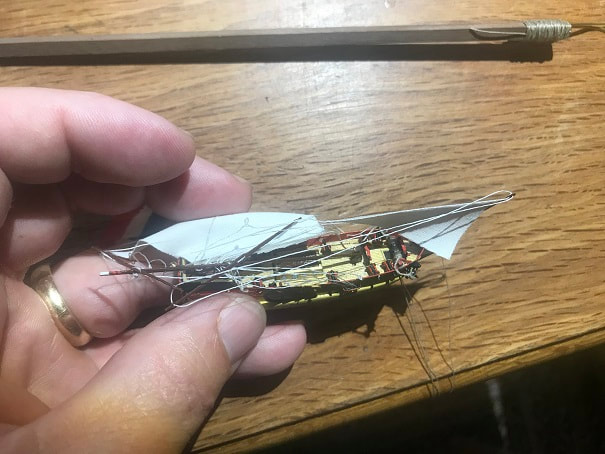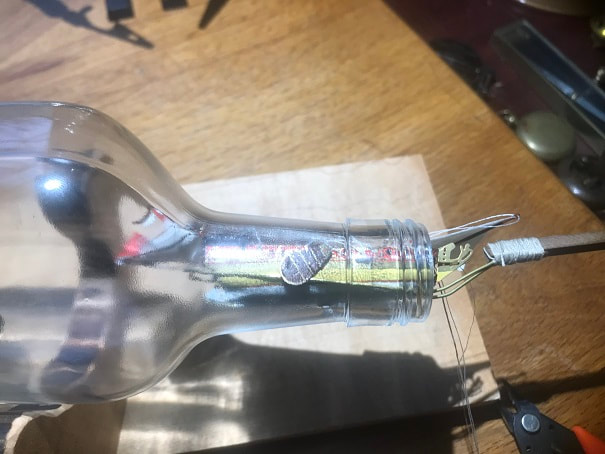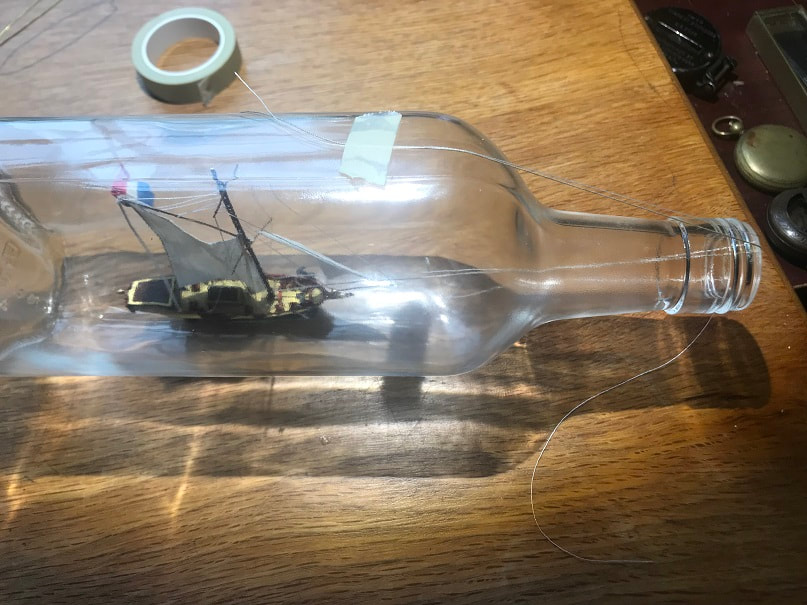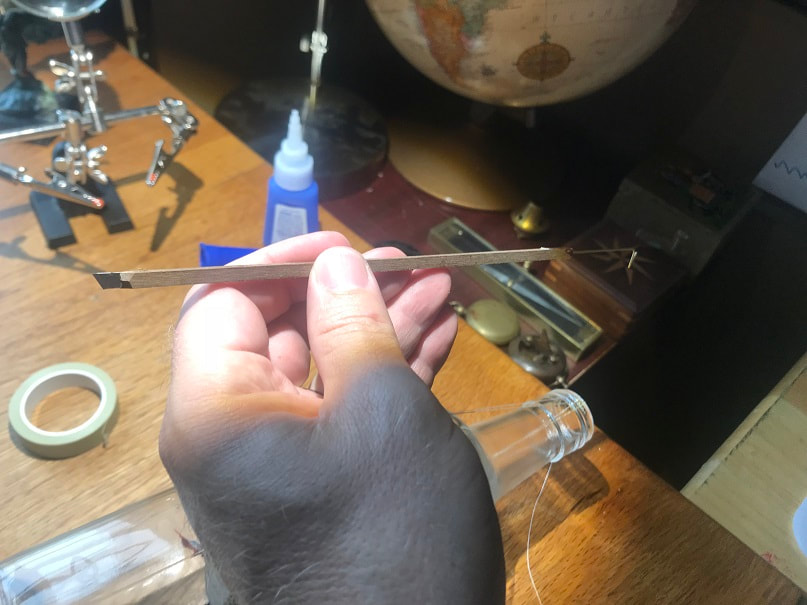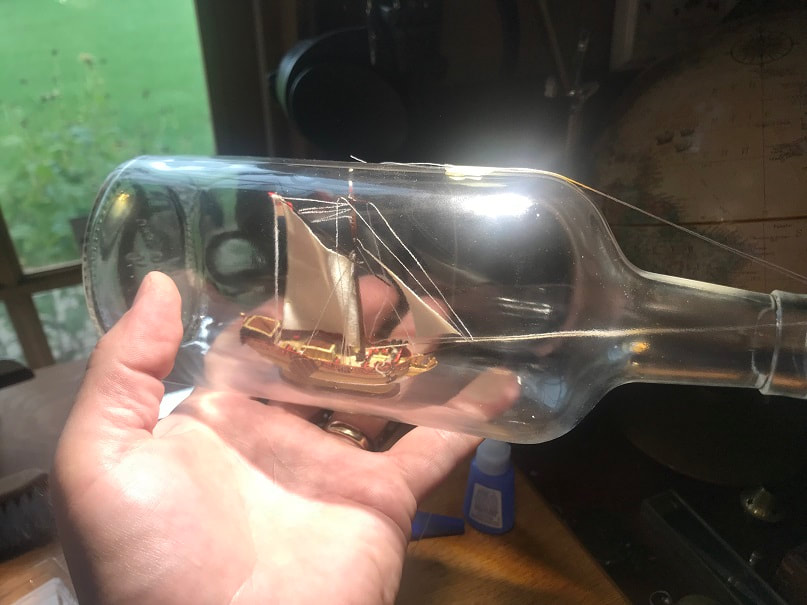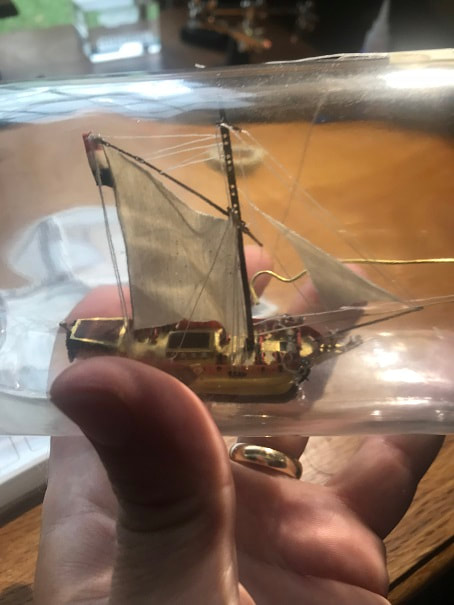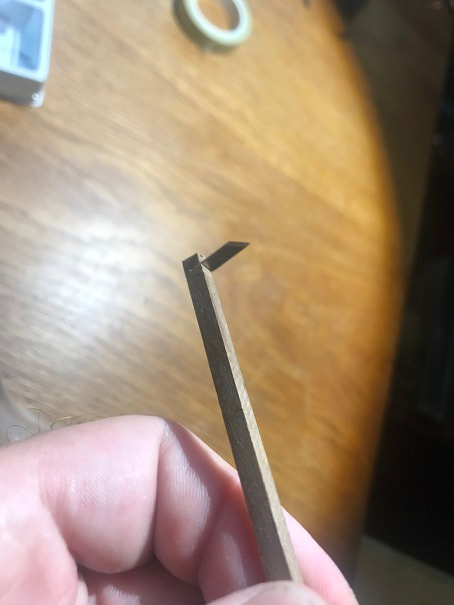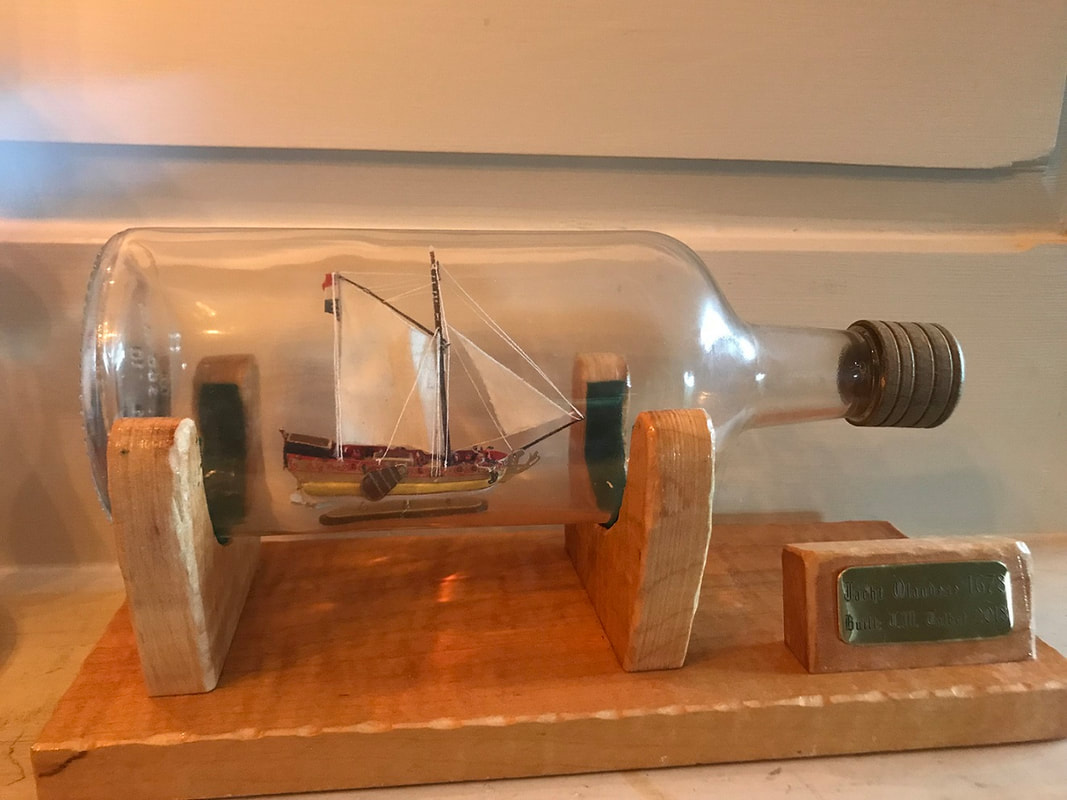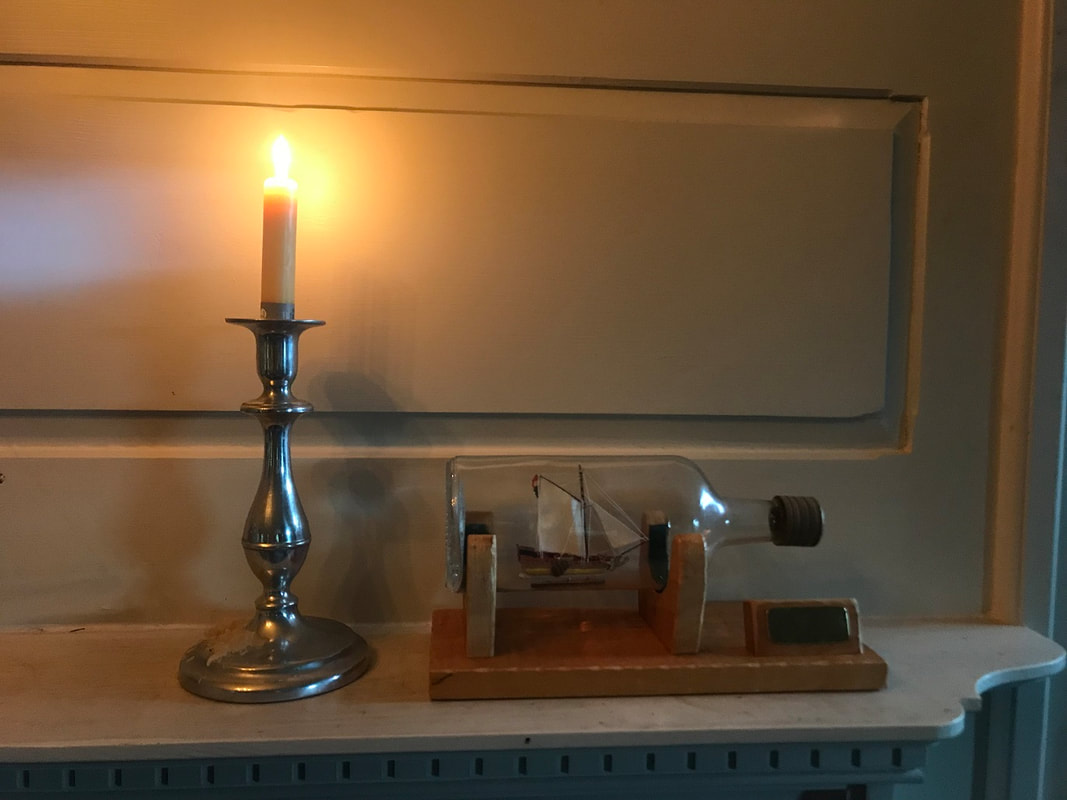A fully rigged ship in a bottle?!! How did that ship get in there?
Ships in bottles are magical works of art to look at in wonder. Here be the build journal of a ship in a bottle. How do these ships get into the bottles? Well here is the quick version..
- The craftsman builds a ship with sails of Chinese silk, ropes made from spider webs, palo santo masts, and a hull of magical wormwood.
- The finished ship fully rigged and assembled must measure about 3/4” tall so that it can fit through the neck of the bottle. The craftsman builds and finishes the ship completely outside of the bottle. The masts are installed standing upright and all the sails are set. It is tiny, as from the keel to the top of the masts is about 3/4” (20mm).
- The tiny ship is then pushed into the opening, and then the bottle must be quickly corked and thrown into the sea.
- If the bottle and ship toss and turn in the sea for long enough, and cross the equator enough times, the salt air and sea water are absorbed by the tiny ship causing to grow in size in the bottle until the ship reaches full size inside the bottle.
- A wanderer on a beach may find the bottle and marvel at the fine ship that will never again leave the bottle. Enjoy!
Now here I will document the detail of building my ship in a bottle. Mine is the Golden Yacht from Amati.
Building the Hull of the Amati Golden Yacht
Work begins on the topsides and deck:
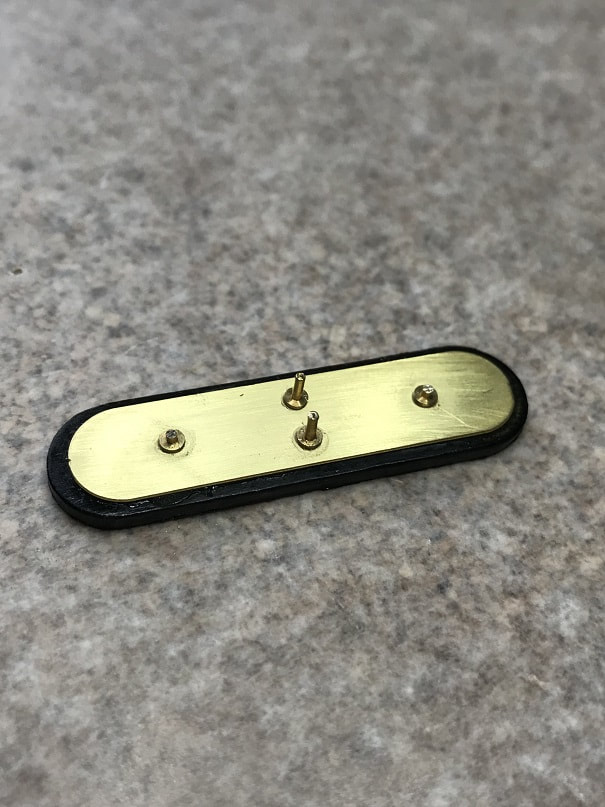
The base plate is made of walnut which I have painted black, along with a brass plate that is glued to the walnut, and finally brass mounting pins. Note that the fore and aft mounting pins need to be trimmed down to that the keel rests on them. The two longer pins fit into the two holes in the bottom of the hull.
Here is a video of mounting the base plate into the bottle:

I mixed two part epoxy glue and put a dab on all four mounting pins and also into the holes in the hull, then I very carefully pushed the knocked down ship into the neck of the bottle and onto the pins. This took numerous attempts over about 5 minutes. Breathe, stay calm and steady; be careful and keep at it until it is positioned properly. It was not easy. Do not use fast set glue. Careful not to get glue on the inside of the bottle.
The Amati Golden Yacht has three lines that lead from the rigging out the neck of the bottle. After the knocked down ship is glued firmly in place, you pull these threads to raise the rigging, then you secure the ends of these lines on the model IN the bottle. Then you cut off the line on the model in the bottle so that no lines leave the ship. After the ship was firmly glued in place I GENTLY pulled all three lines individually and together, to slowly and gently raise the rig. Once that was done I proceeded to finish each line as described below.
This model has three such lines:
This model has three such lines:
- The first I raised was the line which raises the mast to vertical. I raised this line, glued the end in place using a tiny drop of superglue on the end of a bent wire, and then cut of the line right at the glued end using a razor on the end of a long stick.
- The second line pulls the mainsail into position, I pulled and secured this line second, in the same manner as above.
- The third line runs through all the yards, I pulled and secured this line last, in the same manner as above. Then I used a long bent wire to level out the yards.
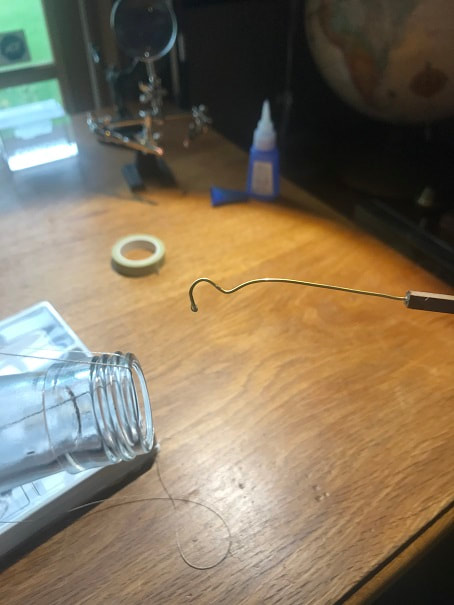
At one end of the long skinny hardwood stick is a razor, and on the other is this flexible brass wire, which I have been bending to suit the area I need to work on. Here you can see a drop of super glue, that I am preparing to place on the end of one of the lines to be secured and fixed in the bottle.
